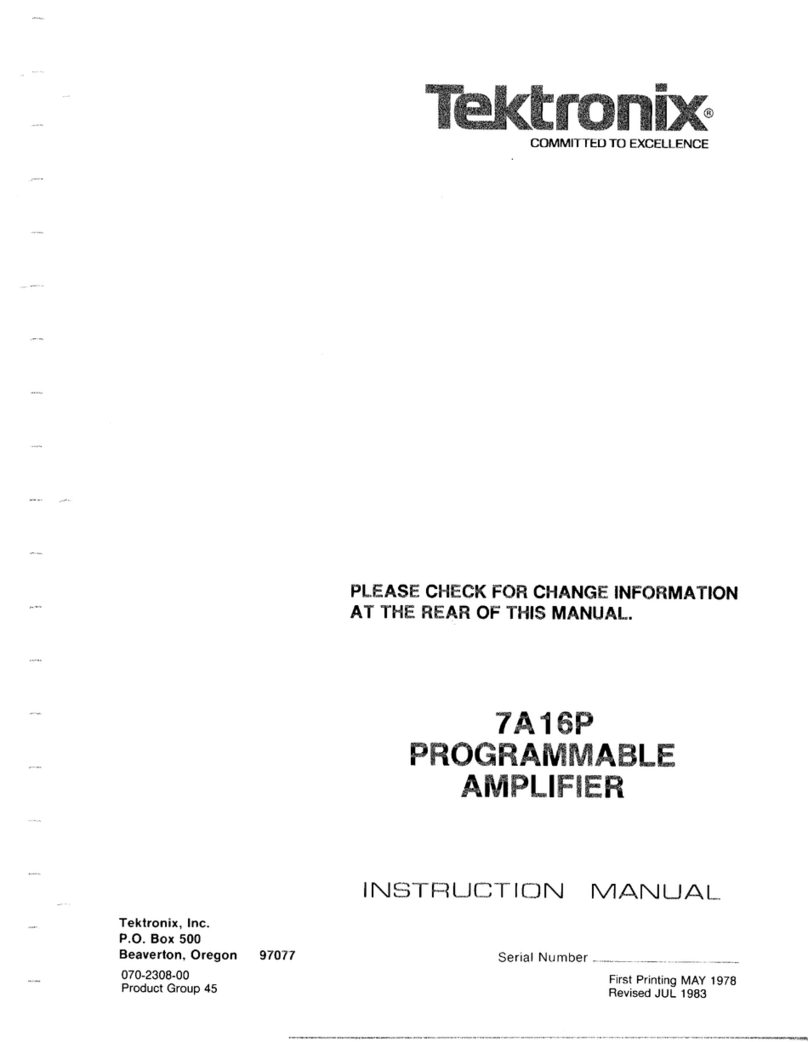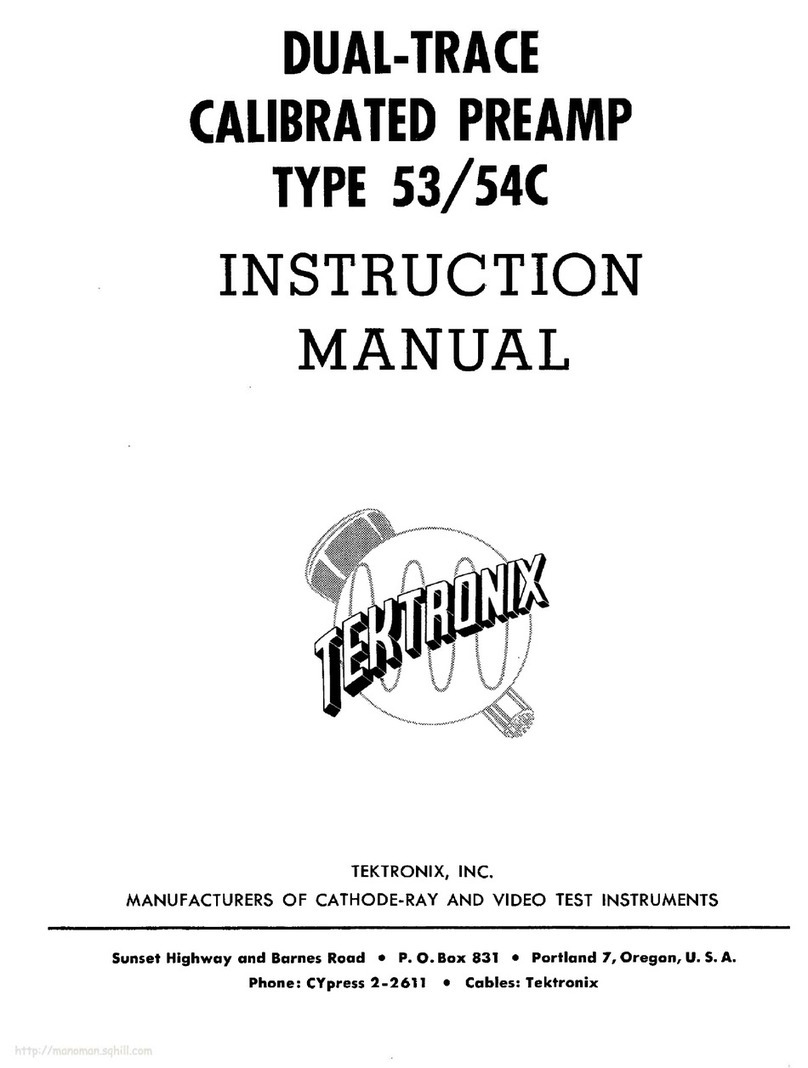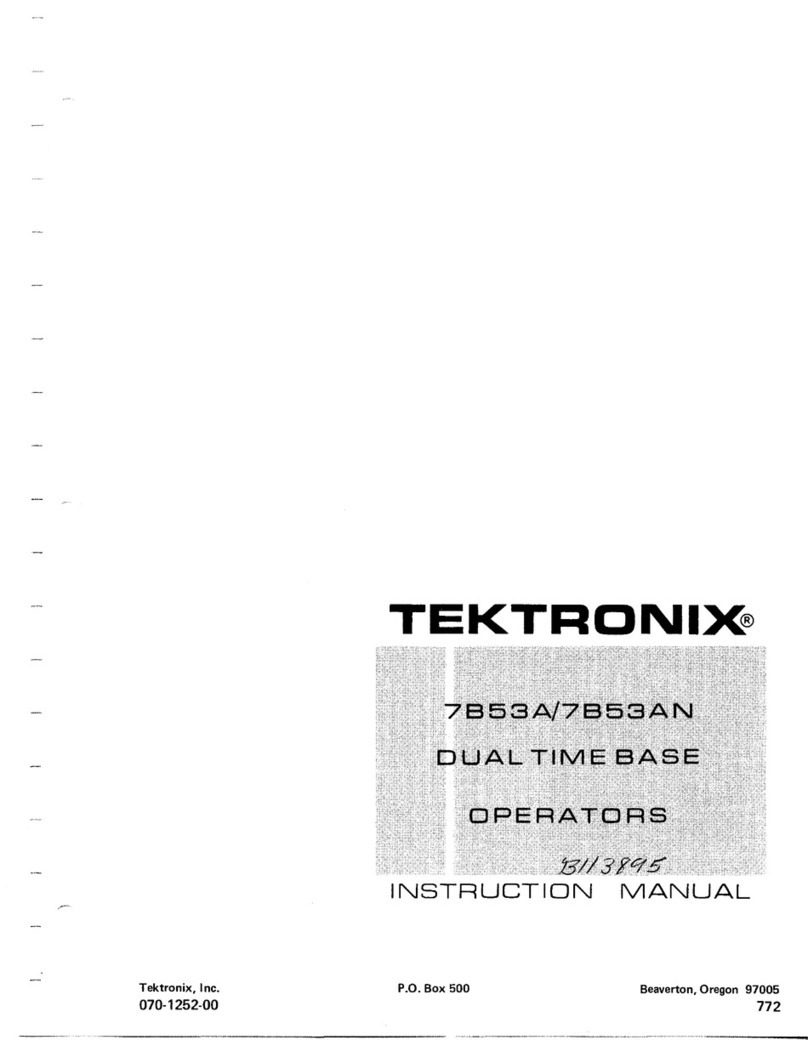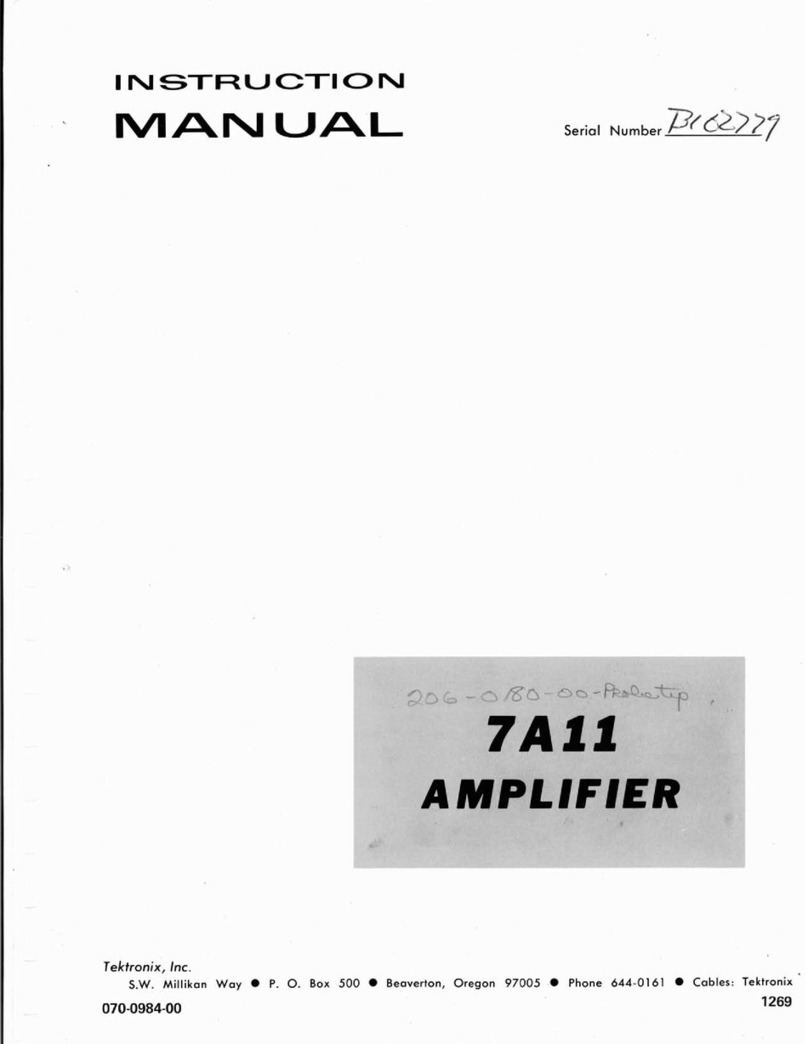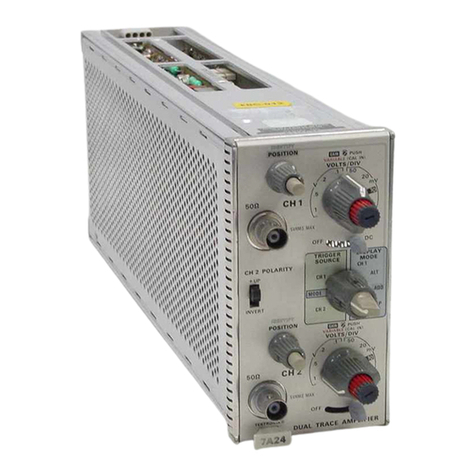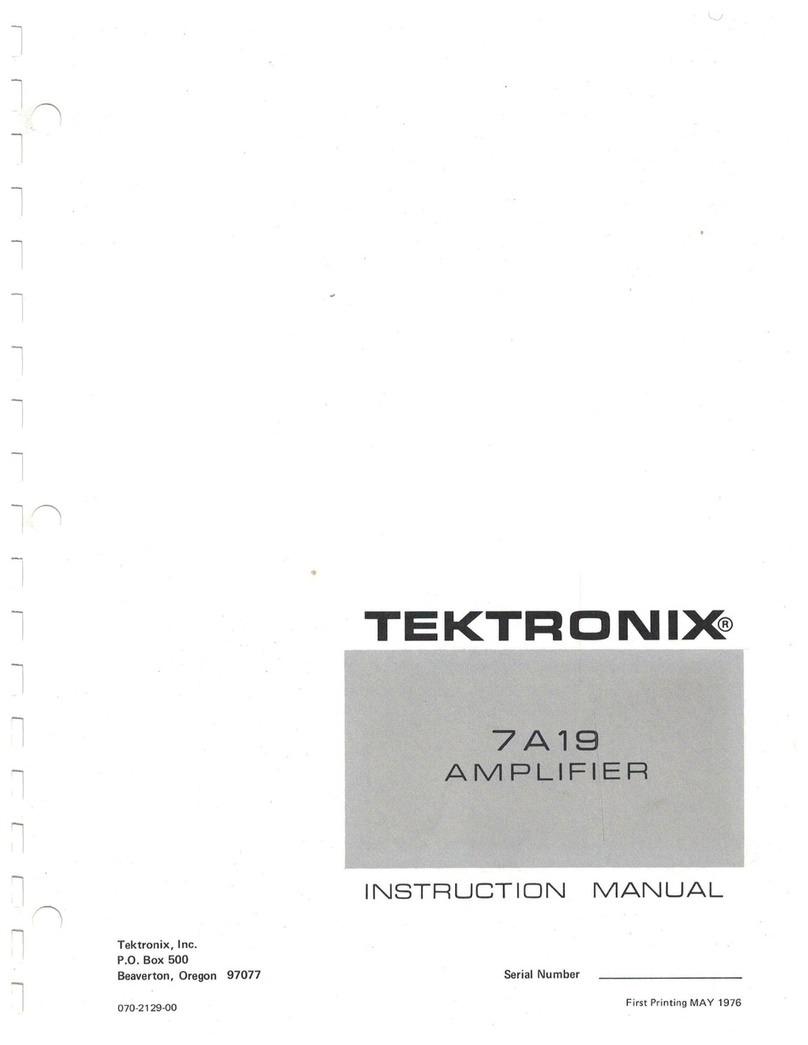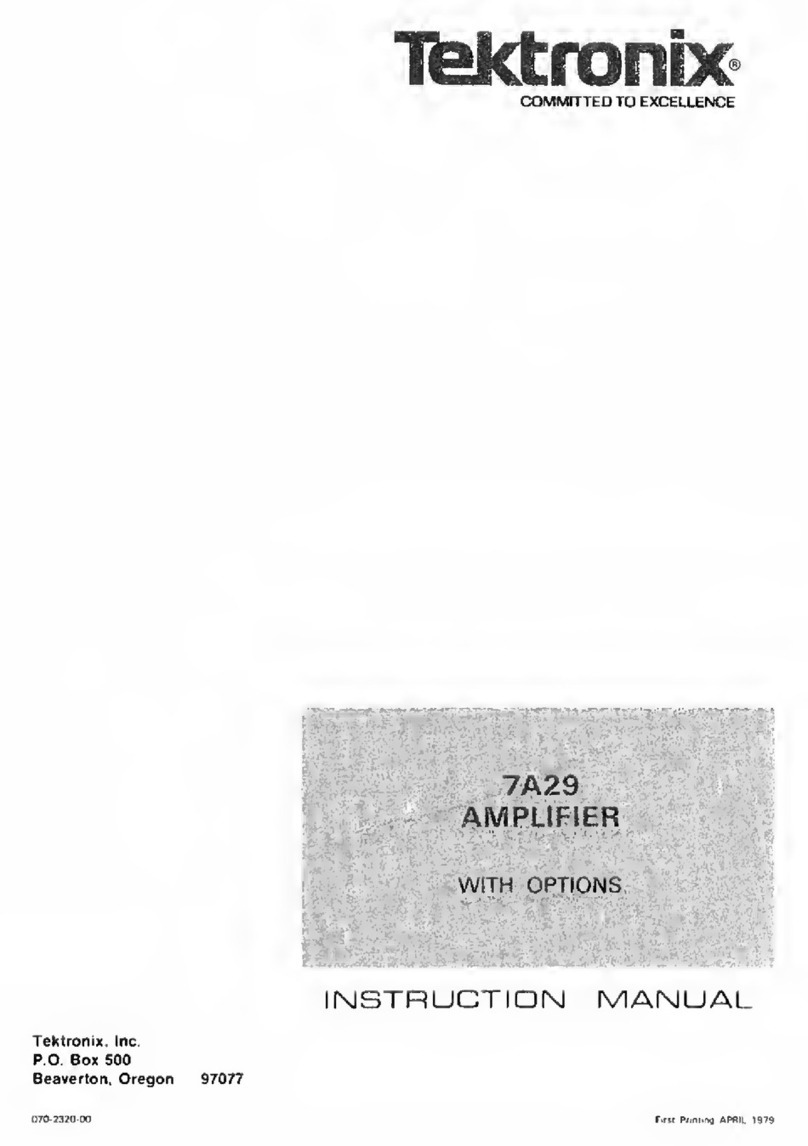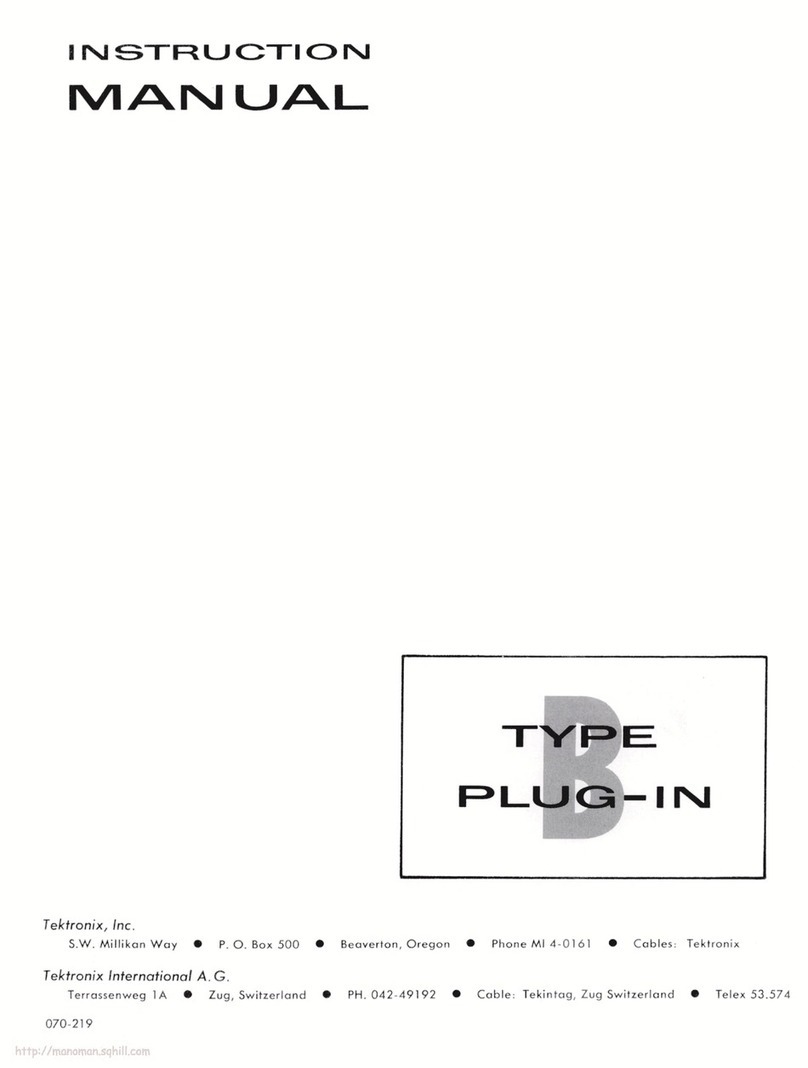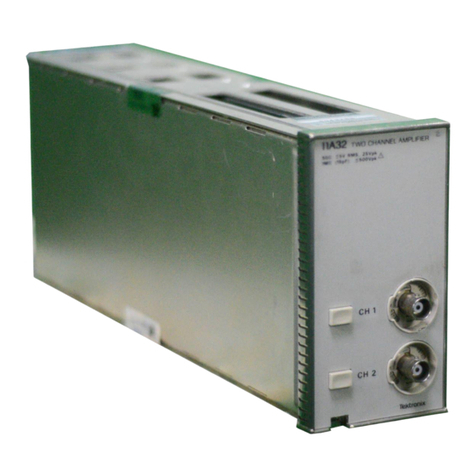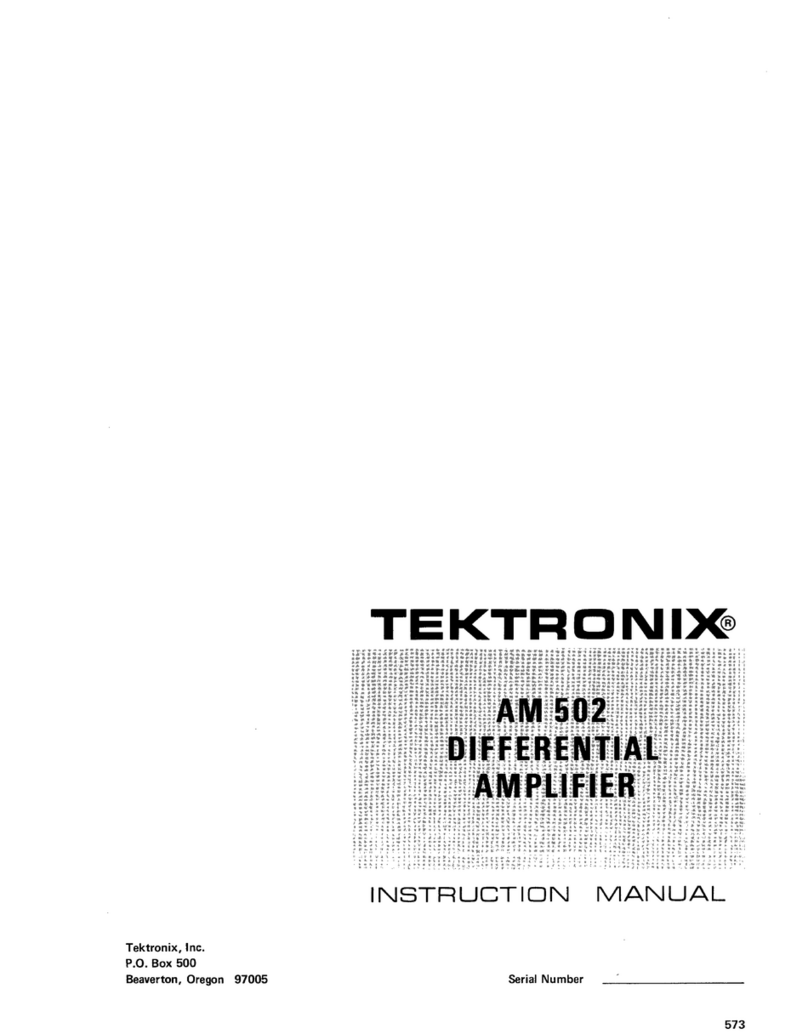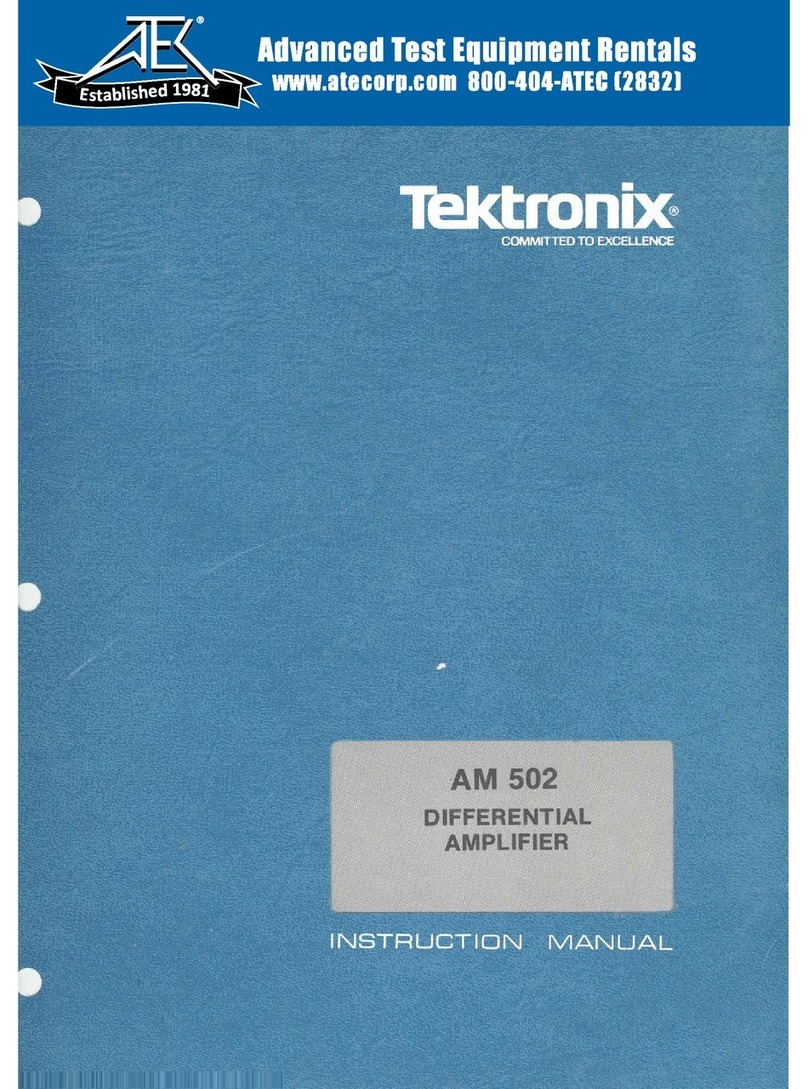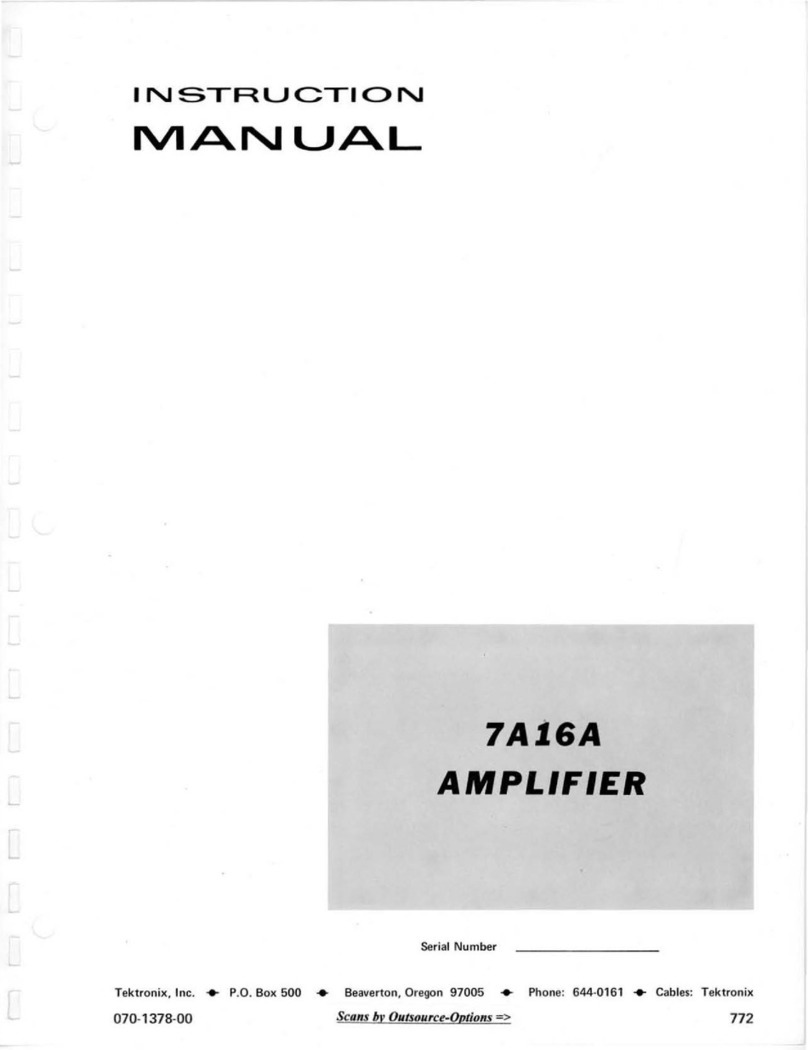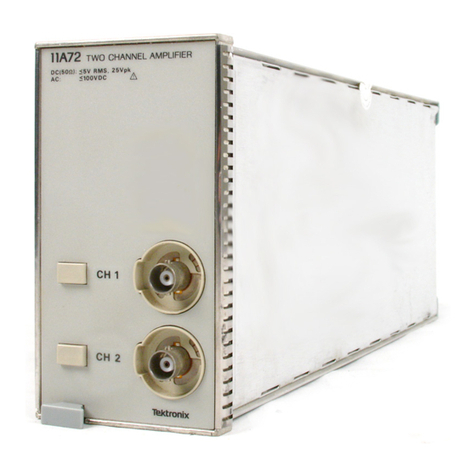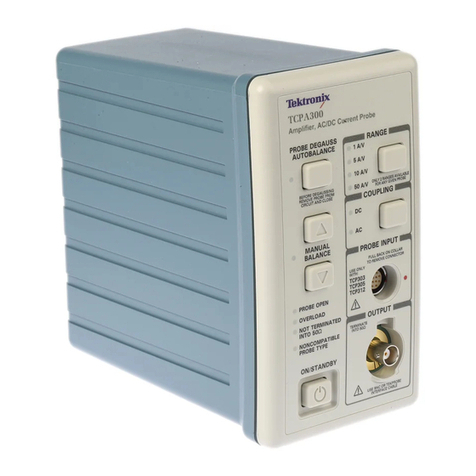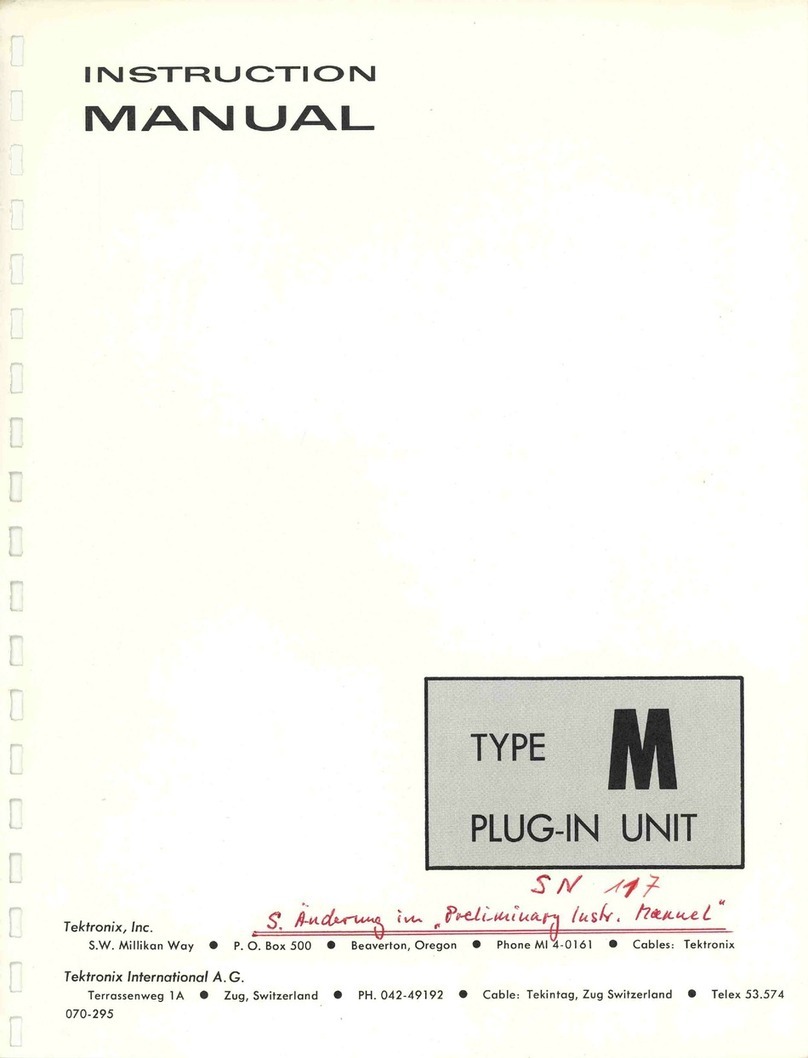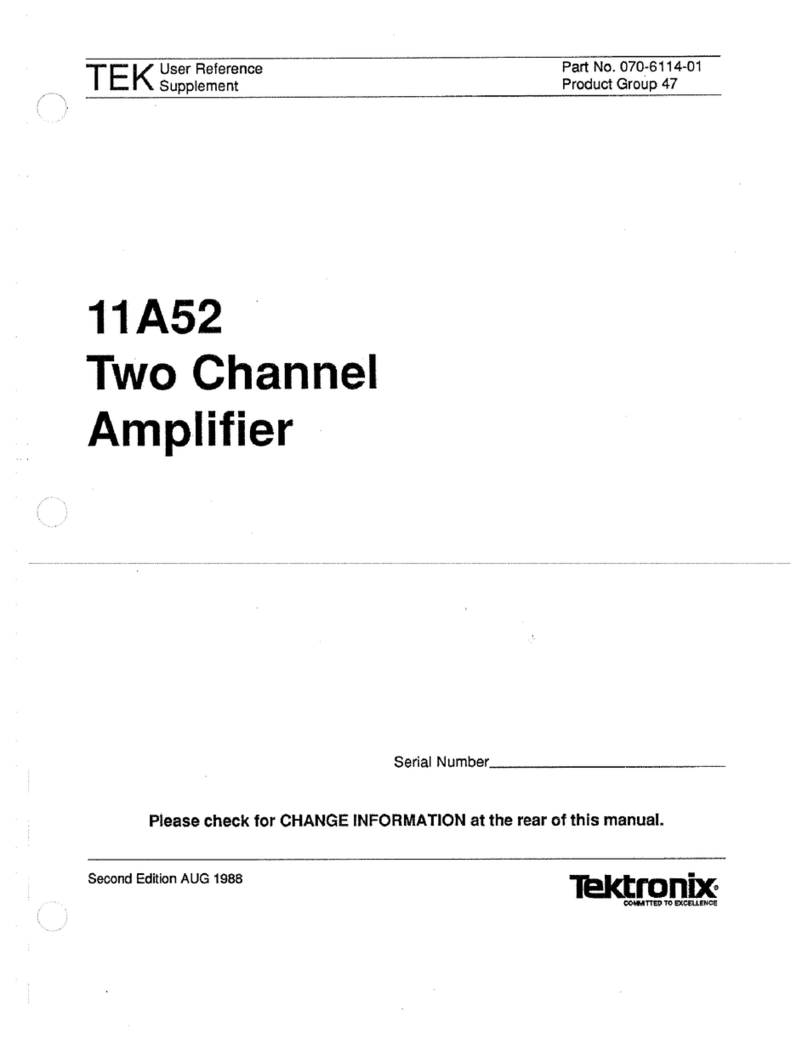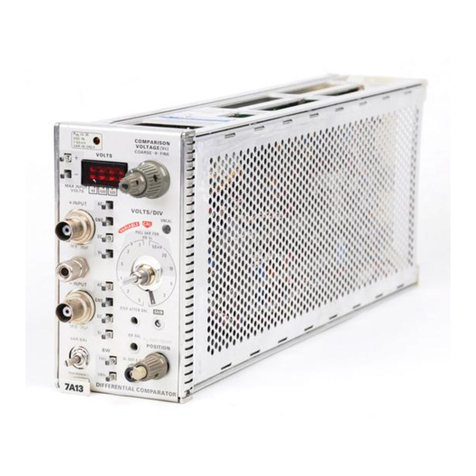
Section
2-7K11
OPERATION
Introduction
This section describes the
function
of
the
front
panel
controls
and
connectors, a general operating procedure
and
some
applicationsl
for
the instrument. Performing the
operating procedure should help acquaint you
with
the
7K11
as
an
accessory
for
the Spectrum Analyzers in
CATV
applications.
FUNCTION OF THE FRONT PANEL
CONTROLS
AND
CONNECTORS
REFERENCE
LEVEL
and
MAXIMUM
INPUT
LEVEL
Concentric controls
that
select a
cal
ibrated reference
level
for
the
top
of
the graticule on the
CRT
display. This
level
can
be
selected in 1
dBmV
or
10
dBmV
steps
to
+79
dBmV.
The reference level
is
indicated via a readout
window
on the selectors and in the upper
left
section
of
the
CRT
display when the 7K11
is
used
with
a 7000·Series
oscilloscope
that
has
the readout feature. This REFER-
ENCE
LEVEL
is
also the
MAXIMUM
INPUT
signal level
for
linear operation. Accuracy
is
referenced
to
the
+30
dBmV
Calibrator at 50 MHz.
RF
INPUT Connector
A 75 n BNC
input
connector
for
the
input
signal
application.
RF
OUTPUT Connector
A 50 n signal source
of
the signal
that
is
applied
to
the
RF
INPUT. This signal level depends on the setting
of
the
REFERENCE
LEVEL
selector
and
applied signal level. The
output
is
-30
dBm
when the
input
signal level equals
that
indicated
by
the REFERENCE
LEVEL
readout. NOTE:
The 7L12
or
7L13 Reference Level
can
be
set
to
a setting
such
as
-40
dBm,
to
increase sensitivity, provided the
additional level (in this
case
10 dB)
is
summed
with
the
7K11 REFERENCE
LEVEL
indication.
CAL
OUT Connector
Provides
access
to
an
accurate +30
dBmV,
50 MHz
signal,
from
a 75 n source. This signal
is
used
as
an
absolute
reference
for
the display
and
is
used
to
calibrate the
7K11/Spectrum Analyzer ensemble. Harmonics
of
the 50
MHz
pilot
signal provide a picket fence
of
markers
across
the frequency span, which
are
used
for
accurate frequency
®
and
span
calibration. The
pilot
or
fundamental 50 MHz
provides the amplitude REFERENCE
LEVEL.
NOTE:
Always
use
the 75
n,
5 1/2 inch cable, which
is
supplied
with
the accessories,
to
connect the
CAL
OUT
to
the
RF
INPUT.
GENERAL OPERATING
INFORMATION!
This
portion
of
the section describes the
front
panel
adjustment procedure necessary
to
calibrate the
7K11,
Spectrum Analyzer,
and
7000-Series mainframe
as
a
system.
NOTE
External graticules are designed
so
they compensate
for
parallax
of
the camera. Graticule markings
will
therefore be correct
on
photographeddisplays.
1. Preliminary Setup and Calibration Procedure
a.
Plug the 7K11
and
Spectrum Analyzer
into
a
7000-Series mainframe.
An
oscilloscope
with
variable per-
sistence
or
bi-stable storage
is
recommended.
b. Connect the 7K11
and
Spectrum Analyzer
as
shown
in Fig.
2-1
and
turn
the power on.
c.
Set the controls
and
selectljlrs
as
shown in the
illustration. Connect the
CAL
OU~gnal
of
the 7K11
to
the RF
INPUT
and
the RF
OUTPUT
to
the Spectrum
Analyzer
RF
Input.
Ensure
that
the Spectrum Analyzer
Reference Level
is
set
to
-30
d
Bm
and
the 7K
11
REFERENCE
LEVEL
is
+30
dBmV.
d.
Allow
approximately 30
to
40 minutes
for
the
instruments
to
stabilize.
lTektronix
brochure,
"no
loose
ends",
No.
A·2698
(supplied
with
the
7K
11
accessories);
Tektronix
brochure.
"Spectrum
Analysis and
CATV
Systems",
No.
A·2515;
and
Tektronix
measurement
concept
booklet,
"Spectrum
Analyzer Measurement
Theory
and
Practice",
Part No.
062·1334·00;
are
recommended
treatise 'on applications
and
measurement
evaluation.
2·'
